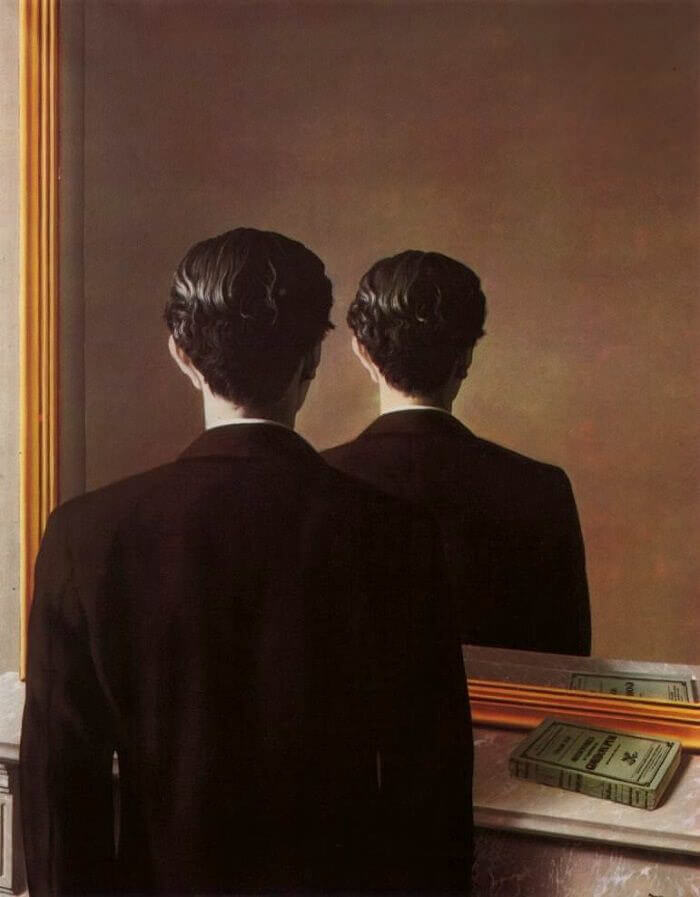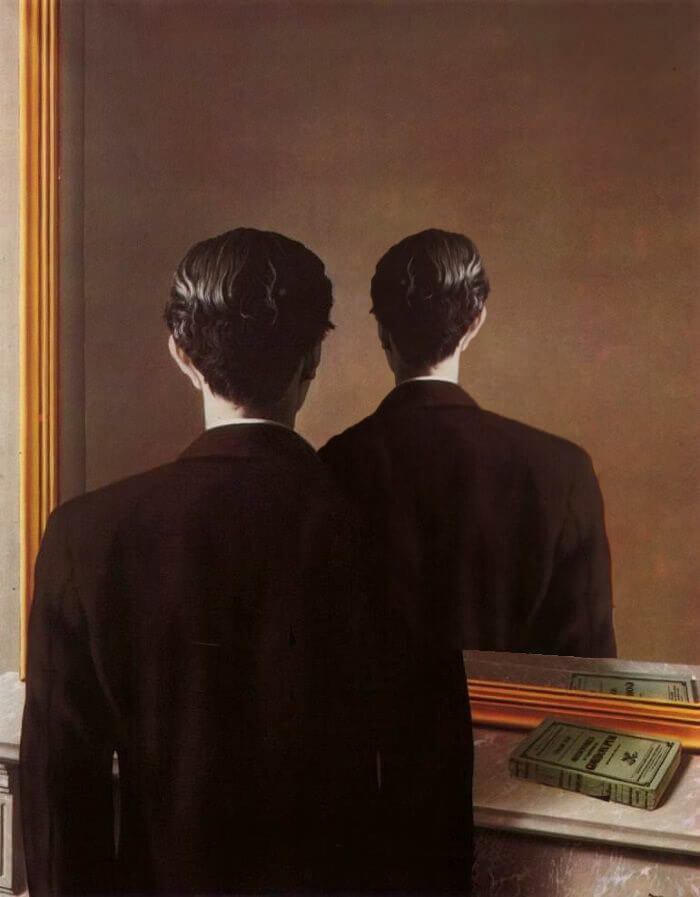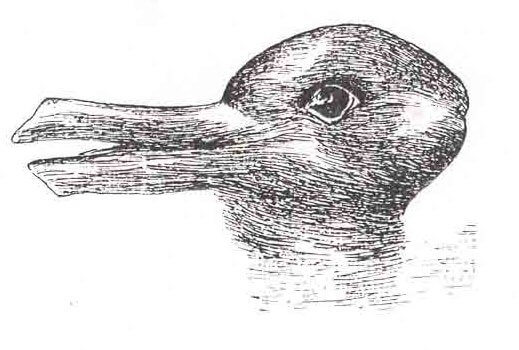This post is part of a larger deep dive
Curious about the role of Edgar Allan Poe’s "The Narrative of Arthur Gordon Pym of Nantucket" in Not to Be Reproduced? Check out Not to Be Reproduced Explained
Or read the full Not to Be Reproduced article!
This post is part of a larger deep dive
Curious about the role of Edgar Allan Poe’s "The Narrative of Arthur Gordon Pym of Nantucket" in Not to Be Reproduced? Check out Not to Be Reproduced Explained
Or read the full Not to Be Reproduced article!

OK, so I’ll discuss how the novel relates to Magritte’s painting shortly.
But first, let me just say that to understand Magritte’s art, it isn’t sufficient to dissect what is visually shown to us and look for clues that may guide us through the narrative of the painting.
Rather, Magritte wanted viewers to contemplate the opposing aspects of his works, and feel the mystery that the narrative naturally evokes.
The idea doesn’t matter to me: only the image counts, the inexplicable and mysterious image, since all is mystery in our life.
René Magritte

Consider the reflections of the book and the man. The reflection of the book in the mirror conforms to our expectations. In contrast, the reflection of the man violates the laws of physics, it is an impossibility – it does not reproduce the man’s reflection accurately.
Even the man himself can be thought of as two different realities: one real, truthful (the man looking into the mirror), and one imaginary, deceptive (the reflected image in the mirror).
Oppositions such as these are ubiquitous in Magritte’s art. He wished to represent the reality as it is, while, at the same time, portraying an alternate reality, and it is this conflict of realities that brings mystery into the painting.

The original title of this painting is La reproduction interdite, which in French could have two possible readings: “reproduction is prohibited” (forbidden) and “prohibited reproduction” (an impossible reproduction).
You might think that the mirror is reflecting the image of the man. If so, and setting the weirdness aside, the angle of the man’s reflection in the mirror would be different than what it actually is (I attempted to show what a more accurate “reflection” would look like in the figure above) – just as the book’s angle is different from the angle of its reflection in the mirror.
And I think the fact that the book is correctly reflected in the mirror is an important point. Magritte wasn’t being sloppy or innatentive when he painted the man, but purposefully painted an erroneous “reflection”.
This means that the “reflection” of the man isn’t supposed to be a reflection at all, but rather an exact copy (or reproduction) of the man’s back – a sort of copy-paste onto the mirror.
And there’s plenty of food for thought here, was not Magritte a philosopher. People think of image reproductions as error-free facsimiles of the actual objects they represent. But what we consider to be the truth may not always be the truth.
Appearances can be deceiving and depend on the viewer’s point of view and perspective.

A modern example of this are visual illusions, such as the one in the figure above. What do you see? A rabbit or a duck?
In either case, you’d be correct! Whether you see a rabbit, a duck, or both, is largely dependent on psychological and sociological aspects. For instance, people are more likely to perceive a rabbit around Easter, whereas they are more likely to see a duck around fall. So, our senses can be deceived, manipulated, depending on a complex multitude of factors.
With Not to Be Reproduced, Magritte is telling us to question reality, to question our perception of images.
But then, what should you believe when you look at a piece of art? Did Magritte offer a solution to this conundrum?
Well, I believe he did. Magritte was adamant we should see with our mind’s eye, rather than the physical eyes. That is, reflect over the contents of the work, let the imagination flow and feelings surface. Feel the mystery!
Again, it’s important to stress that we should not look for the key to that mystery (that’s what sets Magritte apart from other surrealists). Instead, according to Magritte, the purpose of his art is the journey that takes you to that mystery, not what lies beyond it.
If you happen feel the mystery, then the purpose of his art has been accomplished.
Magritte’s fascination with Poe’s writings is directly evidenced by the presence of the book on the mantelpiece.
The Narrative of Arthur Pym of Nantucket is Poe’s only novel, and I was surprised that most analysis of this painting overlook it as either a mere curiosity or as Magritte’s homage to his favourite author (a curiosity: Poe’s novel was published in 1838, almost 100 years before Magritte completed Not to Be Reproduced).
However, after reading the book (you can find the analysis in our previous article), I feel that there could be a more profound link between the two works. After all, why did Magritte choose this particular book in this painting?
Magritte was a huge fan of Poe, who was immensely influential in Magritte’s thinking and work. Poe’s short stories (and novel as I described above) are full of dubious characters that call into question the veracity of their narrations.
I reviewed Poe’s book in the previous article for a reason. In fact, I was content with the interpretation that Pym had returned safe and sound to the US after meeting the giant white figure at the end of his narrative.
However, having the painting in mind, I put forth another, different interpretation – that Pym constitutes a prototypical unreliable narrator.
Take the preface of the novel. It was allegedly written by Pym himself (the protagonist of the novel). Pym stresses that he is the actual author of the book and not certain Mr. Poe, who is actually the editor of the work. Pym explains that he initially did not want to make his adventures public; he thought people would disregard his reports as mere fabrications, as he didn’t keep a diary for most of his journey and feels he would be prone to exaggeration.
So, from the get-go, we are confronted with the possibility that Pym’s story is the product of his imagination, that none of the events at sea took place.
For instance, if we assume that Pym dies after entering the chasm (the interpretation I put forth in my previous article), then it calls into question the entire novel, as we could not possibly know what happened to Pym. Indeed, if Pym died then it’s likely his diary was lost with him. Furthermore, since the entire crew of the Grampus and Jane Guy perished, there would be no-one to tell Pym’s story.
Now, just as Poe incorporates contradictions and ambiguities in his novel, ultimately making us question the truthfulness of Pym’s account, so does Magritte invite viewers to question what we are seeing (is the reflection of the man really a reflection?).
By associating this painting with Poe’s novel, Magritte may be highlighting the unreliability of narratives that suffuse the world of art.
Nothing can be taken for granted. Question your perception since what you see may not be entirely truthful.
In the end, the only idea that matters is this: mystery!
In a way, what Magritte is telling us with Not to Be Reproduced (and possibly with many other of his works) is that a painting is really just a painting.
In fact, a painting of a subject is always that subject as seen from the perspective of its creator.
And no matter how much you try to give meaning to it, you cannot be sure that the meaning you attribute to it is the actual truth.
Appearances can be deceiving, and the only way Magritte believes art makes sense is by feeling the mystery it evokes.
If you look at Not to Be Reproduced, I bet you can sense the mystery.
Expecting to see the face of the man, you are presented with a copy-paste of the man’s back, whereas the book is correctly reflected.
Explicitly, the reflection of the man in the mirror is just how Magritte saw his subject: from the back.
Implicitly, Magritte is pointing out that this is exactly the reason why you should not trust your perception of images, that you should not look for clues that could bring some sense within our reality. An artist paints with his mind’s eyes, and this is something intangible.
And isn’t unreliability what makes Poe’s novel a mystery of its own kind? Doesn’t Poe also invites us to doubt Pym’s account? Isn’t it obvious that there is no way we can confidently say what is reality and what is fiction? Shouldn’t we simply feel the mystery of what happened to Pym?
Surely, the similarities between Not to Be Reproduced and Poe’s novel could not have gone unnoticed by Magritte.
Not to Be Reproduced is surely an intriguing work of art.
I sometimes wonder what it would be like if the man in the painting moved, turned around, picked up the book on the mantelpiece, disappeared from the image. What would we see in the mirror?
Just the thought of it sends me a chill down the spine!
And there is another word for that feeling: mystery!
Magritte, spot on mate! 🙂
See you in the next article!
Leave a comment
Add Your Recommendations
Popular Tags